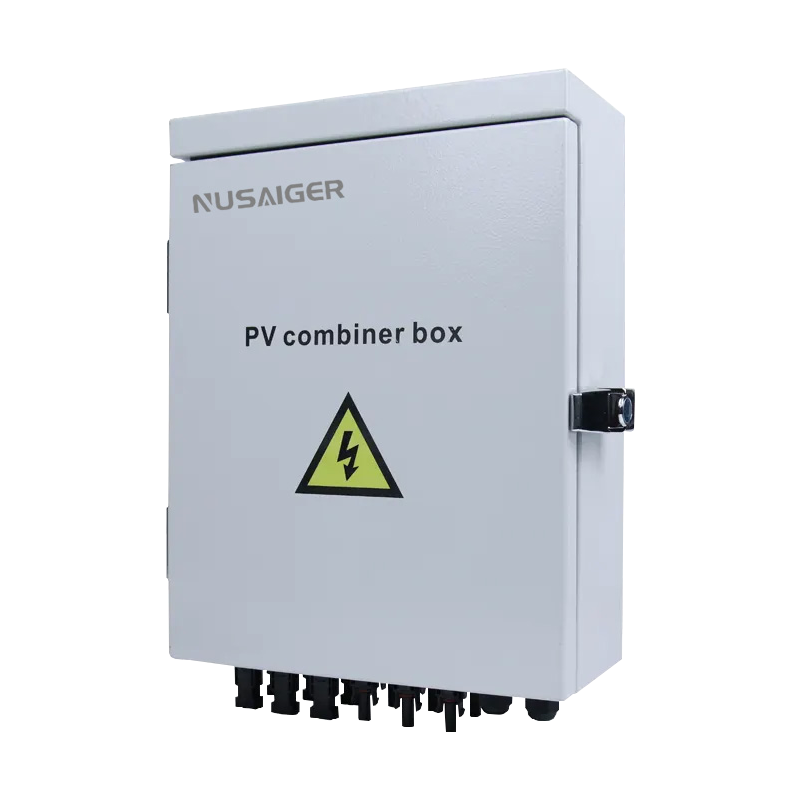Top 10 Installation Mistakes with PV Combiner Boxes and How to Avoid Them
Proper installation of PV combiner boxes is crucial for the safety, reliability, and long-term performance of solar power systems. However, even experienced electricians can make mistakes during the wiring and mounting process—errors that can lead to system inefficiencies, component failure, or even fire hazards. This guide outlines the top 10 installation mistakes commonly seen in the field and provides practical tips on how to avoid them.
1. Incorrect String Polarity Connections
One of the most common mistakes in PV installations is connecting a solar string with reversed polarity. This can cause arcing, fuse blowout, or inverter damage.
How to Avoid:
- Use a multimeter to verify voltage and polarity before connecting each string.
- Label positive (+) and negative (−) leads during pre-wiring.
- Use color-coded cables (typically red for +, black for −).
2. Overloading String Inputs
Connecting strings that exceed the rated voltage or current of the combiner box can result in overheating, fuse failure, or component damage.
How to Avoid:
- Match the combiner box voltage (e.g., 600V, 1000V, 1500V DC) to the system specs.
- Check manufacturer datasheets for string capacity and current ratings.
3. Improper Grounding and Bonding
Inadequate grounding poses a severe safety risk and can lead to high fault currents or electric shock.
How to Avoid:
- Use appropriately sized grounding conductors and lugs.
- Ensure the combiner box is bonded to the array and the building ground.
- Test ground continuity with an insulation tester.
4. Poor Cable Management and Termination
Loose wires, tangled conductors, or poorly crimped terminals can cause high resistance, arcing, or even fire.
How to Avoid:
- Use ferrules or crimp terminals for a secure connection.
- Organize wires using tie mounts, cable glands, and labeling systems.
- Maintain minimum bend radius and spacing guidelines.
5. Skipping Torque Settings
Failing to tighten screws and terminals to the manufacturer’s specified torque can result in poor connections.
How to Avoid:
- Use a calibrated torque wrench.
- Refer to the installation manual for each terminal’s torque spec.
6. Improper Placement and Orientation
Mounting the combiner box in a location exposed to direct rain, snow, or extreme heat can reduce its lifespan and affect performance.
How to Avoid:
- Mount the box under an overhang or install a protective cover.
- Keep it out of direct sunlight to reduce internal heating.
- Follow the IP rating guidelines (e.g., IP65 for outdoor use).
7. Inadequate Surge Protection
Neglecting to install or properly configure the surge protection devices (SPDs) may leave the system vulnerable to lightning strikes and voltage spikes.
How to Avoid:
- Use Type 2 or Type 1+2 SPDs rated for DC systems.
- Connect SPD grounding properly and check MOV condition indicators.
8. Ignoring Local Electrical Codes
Failure to adhere to National Electrical Code (NEC) or international standards can result in inspection failures, fines, or safety issues.
How to Avoid:
- Review NEC Article 690 (for the U.S.) or IEC 60364-7-712.
- Use only listed or certified components.
- Work with a licensed solar electrician when in doubt.
9. No Provision for Maintenance Access
Installing the box in a hard-to-reach location complicates troubleshooting and maintenance.
How to Avoid:
- Mount the box at eye level or within easy reach of service personnel.
- Ensure at least 24 inches clearance around the box for tools and diagnostics.
10. Not Testing After Installation
Commissioning a solar array without fully testing the combiner box and string outputs can lead to undetected issues.
How to Avoid:
- Use an I-V curve tracer or multimeter to test each string.
- Verify correct fuse values and SPD operation before energizing the system.
- Document test results for future maintenance.
Bonus Tips for Installers
- Always read the manufacturer’s manual before installation.
- Keep desiccant packs inside the box to control humidity.
- Use UV-rated zip ties and enclosures for outdoor durability.
- Apply dielectric grease to terminal connections in corrosive environments.
Conclusion
Even the most sophisticated solar system can fail if the PV combiner box is improperly installed. Each mistake outlined above represents a real-world risk—some lead to costly equipment failure, others to dangerous electrical hazards. By understanding and avoiding these common pitfalls, installers can ensure a safer, more efficient, and long-lasting solar installation.
Always follow the latest best practices, consult the manufacturer’s documentation, and verify your work through testing. A well-installed PV combiner box doesn’t just combine circuits—it safeguards your entire solar investment.



